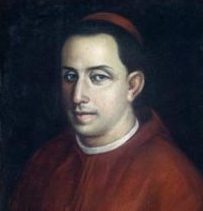To it was joined a fusillade which produced a good effect, for on the day of the twenty-sixth,[60] several corpses were to be seen from the place scattered between the glacis and the hostile trenches. Some muskets that had been left by those killed were picked up. Since the enemy did not take them away, their bodies were buried in the bellies of hungry foxes and dogs which were very numerous there, and which devoured them in a short time in the sight of our men who manned the walls.
At eight in the morning, some Indian and mestizo spearmen presented themselves before the enemy’s trenches, without that movement on their part having been preceded by any order. On approaching the advanced outposts who were occupying the sacristies of the church of San Juan de Bagumbayan, the bakery, and other neighboring houses, those Indians (although few in number), threw themselves on the enemy with such fury that they gained possession of the posts which have just been mentioned. They drove out the hostile musketeers, wounding and killing all that they met. But the English were promptly succored by a reinforcement of three hundred fusileers, who regained the posts that they had lost, and caused the Indians to retreat, to whom a signal was made from the bastion of San Andres to leave a clear field so that the fire of our artillery could have free play. The artillery did, by this means, great harm to the enemy.
During the progress of this bloody action, an offjcer of the camp was perceived, who was carrying a white flag. He was followed and accompanied by a young man clad in black, and by a drummer beating the chamade. The fire of our artillery was suspended, but the fusillade of the enemy continued with unequaled obstinacy, against the Indian spearmen who always sustained that fire. Consequently, the Indians attacked the English officer, killed him, and gave seven mortal wounds to the young man who accompanied him. The drummer was also killed, and another person who appeared to be the servant of the officer. The Indians cut off the head of the latter, but not being longer able to endure the hostile fire they retired to the covered way of the royal gate, which was opened for them so that they could re-enter. Following are the facts of the case. The nephew of the archbishop, Don Antonio Sierra de Tagle, having been made prisoner on board the little galley and conducted aboard the flagship, of which we have spoken above, the English commander-in-chief had offered in advance to grant him his liberty, and the English officer was conducting him for that purpose. That young man died of his wounds.[61]
During the whole of this day, the bombardment continued with fury, the enemy having increased their batteries of the church of Santiago by three mortars. After dinner an officer was despatched to the camp of the enemy to agree upon a truce, so that they could take away the body of their officer who had been killed. They did so, but many other dead bodies were left. On our side also, some who had been wounded were brought in.
